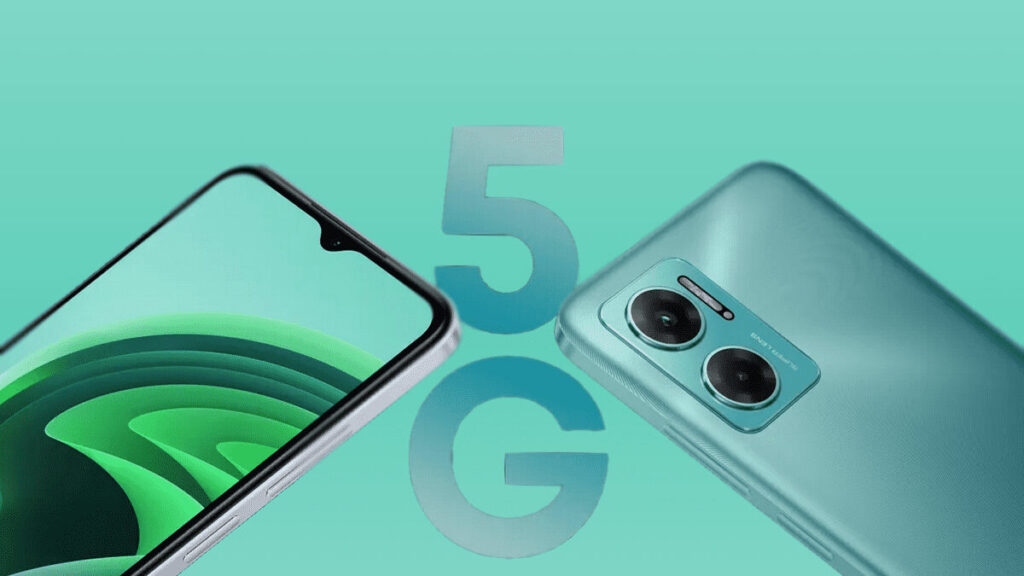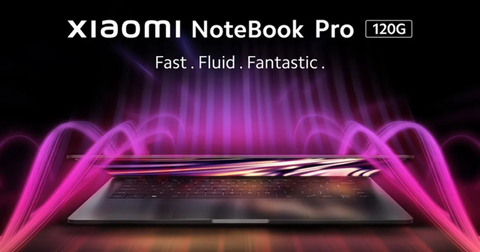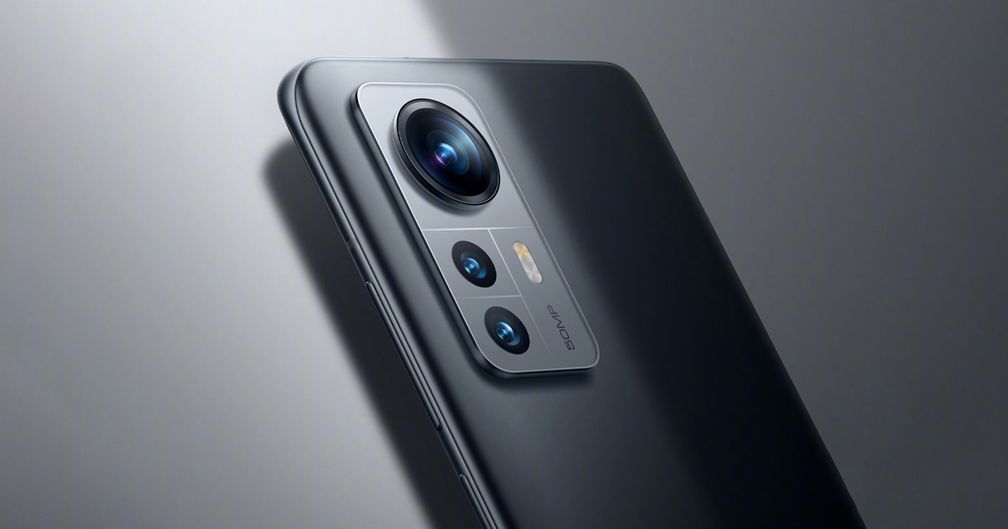Xiaomi Expands EV Production with $116 Million Site Acquisition in Beijing

I am a law graduate from NLU Lucknow. I have a flair for creative writing and hence in my free time work as a freelance content writer.

I am a law graduate from NLU Lucknow. I have a flair for creative writing and hence in my free time work as a freelance content writer.

I am a student pursuing my bachelor’s in information technology. I have a interest in writing so, I am working a freelance content writer because I enjoy writing. I also write poetries. I believe in the quote by anne frank “paper has more patience than person
The world’s second-largest manufacturer after Samsung, Xiaomi, introduced its Redmi 11 Prime, Redmi 11 Prime 5G and Redmi A1 in India on September 6 2022. These Redmi smartphones were premiered as part of the “Special Diwali with MI” sale and are made in India for Indian folks. The brand-new Redmi A1 is the most low-cost and reasonable handset in comparison with all these newly launched Redmi smartphones, and it operates on stock Android out of the box. In the meanwhile, the Redmi 11 Prime is a redesigned variant of the latest POCO M5 which was launched the day after tomorrow, 5 September 2022 in India.
The
Redmi 11 5G sports a 22.5 W charger inside the box however, it only
upholds an 18 W charging speed.
Here
is detailed information on the specifications, availability and price
of these Redmi phones.
Redmi 11 Prime 5G – Specifications
Redmi
11 Prime 5G sports a 6.58 Full-HD plus Liquid Crystal Display (LCD)
panel that upholds a 90 Hz refresh rate, and durable and corning
Gorilla Glass. The handset is powered by a MediaTek Dimensity 700 SoC
together with up to 6 GB RAM and 128 GB storage which is -expandable
up to 1 TB with the help of a micro-SD card. Redmi 11 Prime 5G
features a 5000mAh battery that supports 18 W charging and keeps the
lights on, while the smartphone comes with a 22.5W charger. The
photography on this smartphone is enhanced by a dual rear camera
setup which includes 50 MP primary and 2 MP depth. There is also an 8
MP selfie camera on the front for a great video calling experience
and picture quality. It operates on Android 12-based MIUI 13
supporting 1p52 water and dust resistance, and comes with a 3.5 mm
headphone jack and an IR blaster.

Redmi 11 Prime – Specifications
Redmi
11 prime features a 6.58-inch display that upholds full HD+
resolution, corning Gorilla Glass and 90 Hz refresh rate. It is
powered by a MediaTek Dimensity G99 chip and a 5000mAh battery with
18 W charging support. Redmi 11 Prime is available in 4GB/64GB and
6GB/128GB storage options together with upgradability to 1 TB using
an SD card. It offers a rear camera with 50 MP primary, 2 MP macro
and 2 MP portrait functions. It houses an 8MP shooter on the front
for clicking selfies and video calling and operates on Android
12-based MIUI 13 together with a 3.5 headphone jack and IR blaster.
Redmi A1 – Specifications
Redmi A1 features a 6.52-inch screen that supports 1600×720 pixels HD+ resolution and comes with a 5000mAh battery with 10 W charging support powered by MediaTek Helio A22 processor. It flaunts 2 GB RAM with 32 GB storage expandable up to 1 TB, an 8 MP dual rear camera with Auxiliary sensor, 5 MP front-facing camera for selfies and video calling, contained in a waterdrop notch at the front and runs on Android 12 operating system.
Price and Availability
Redmi 11 Prime is priced at 12,999 INR for the 4 GB/ 64 GB variant and for the 6 GB/ 128 GB variant it costs 14,999. It is available in a total of three colour options which include Flashy Black, Peppy Purple and Playful Green. The price of Redmi 11 Prime 5G is 13,999 INR for the 4 GB and 64 GB variants and for the 6 GB / 128 GB version it costs up to 15,999 INR. It is also provided in three colourways which include Chrome Silver, Meadow Green and Thunder Black. The most affordable Redmi A1 is available to buy at 6,499 INR. This too comes in three colour options which include Green, Black and Blue. It is available for ordering on e-commerce websites such as Amazon and also on Xiaomi’s official site beginning on 9th September 2022 at noon. The Redmi A1 sale will initiate on 9th September 2022 at 4 in the evening.

I am a student pursuing my bachelor’s in information technology. I have a interest in writing so, I am working a freelance content writer because I enjoy writing. I also write poetries. I believe in the quote by anne frank “paper has more patience than person
Chinese Tech-giant Xiaomi has released the Xiaomi NoteBook Pro 120 series in India as a part of its commitment to update its product on Tuesday, 2022. The lineup includes both the standard Notebook Pro 120 and the Notebook Pro 120G variants. These two products are the successors of the product Xiaomi launched last year, the Mi Notebook Pro, and these have almost the same specifications. The Notebook Pro 120G sports enhanced graphic performance comparatively. It consists of Nvidia GeForce MX550 GPU whereas the Xiaomi Notebook Pro 120 uses Intel UHD Graphics and they both are featured with some improvements in comparison with the last generation products.
The brand-new Xiaomi Notebook Pro 120 operates on Windows 11 and features a 2.5k resolution 120Hz display. It is powered by 12th gen Intel Core i5 H-series processors and much more. The basic version of the Notebook Pro 120 series comes with the integrated GPU and the rest specifications are the same as the 120G variant.
Here is detailed information about the specifications, price, availability, and advanced features of the Notebook Pro 120G laptop.
Xiaomi Notebook Pro 120G: Specifications
The brand -Xiaomi Notebook Pro 120G displays a 14-inch 2.5k (2560×1600 px) resolution display which provides a 120 Hz refresh rate, 100 percent RGB colour gamut, a 16: 10 aspect ratio and supports DC Dimming. But, the thing to notice is that the display can be changed to several refresh rates besides 120 Hz. It can be set to 90 Hz and also 60 Hz. The panel of this machine is TUV Rheinland certified
The Notebook Pro 120G laptop comes with a 12th gen Intel core i5-12450H series processor in addition to an Nvidia GeForce MX550 dedicated GPU. The product accompanies up to 16 GB of LPDDR5 RAM and 512 GB of PCle Gen 4 SSD storage and it operates on Windows 11 Home.
The laptop consists of a full-sized three-level backlit scissor mechanism keyboard that provides 1.3 mm deep key travel. Xiaomi Notebook Pro 120 G connectivity features consist of Wi-fi 6 and Bluetooth v5.2 support.
Xiaomi Notebook Pro 120G draws the power from its 56 Wh battery. We also need a comparable amount of charging support to recharge this big battery. So, this laptop provides 100 W fast charging support. The company has made the claims saying that the laptop can charge in a short amount of time i.e. from 0% to 50% in just 35 minutes.

Speaking of its design, it projects the MacBook-like design that Xiaomi laptops have followed from the beginning and is built with an Aerospace Grade Aluminium alloy. It has a sleek, thin and lightweight design that just weighs 1.4 kilograms with thick top and bottom display bezels.
Talking about the port options, the Notebook Pro 120G comes together with a Type-C USB 3.2 Gen 2 port, a Type-A USB 3.2 Gen 1, a Thunderbolt 4 for data transfer and charging, an HDMI 2.0 Port and a 3.5 mm headphones Jack.
Some Other specifications of the Xiaomi Notebook Pro are dual stereo speakers bundled with DTS audio, a fingerprint sensor integrated with the power button, a 720p HD webcam, an in-built microphone and a hurricane dual cooling system.
Xiaomi Notebook Pro 120G: Price and Availability
The brand-new Xiaomi Notebook Pro 120G will be available for ordering on Amazon, the Official website of Mi India and in different Mi stores across India from 20th September.
The price of the latest Notebook Pro 120G is 74,999 INR which is about 942 USD and the Xiaomi Notebook Pro Costs 69,999 INR which is about 880 USD.
Xiaomi Notebook Pro 120G appears to be a great laptop considering the specifications and features it offers at the current price.

I am a student pursuing my bachelor’s in information technology. I have a interest in writing so, I am working a freelance content writer because I enjoy writing. I also write poetries. I believe in the quote by anne frank “paper has more patience than person
Xiaomi has introduced its brand-new smartphone, the MIX Fold 2 in China today. The new Xiaomi Mix Fold 2 has some major design changes and it gets updated with immense and par excellence specifications or features. Xiaomi introduced its MIX fold 2 in China just a day after Samsung introduced its Galaxy Z Fold 4 on a global scale. The MIX Fold 2 has a larger display as compared to Galaxy Z Fold 4 5G. It is also thinner than Samsung’s brand-new foldable smartphone.
Xiaomi has also introduced its premium foldable smartphone having Leica-adapted cameras on the backside. Here is a detailed description of its pricing and specifications.
Specifications And Features
Xiaomi Mix Fold 2 is generated with or powered by a Snapdragon 8+ Generation 1 SoC, together with 12 GB of RAM. It supports an E5 AMOLED outer display of 6.56-inch sustaining a refresh rate of 120 Hz. Other innovative features are its 21:9 aspect ratio, Corning Gorilla Glass Victus Protection, and Dolby Vision. The handset also possesses specialties like an 8.02-inch LTPO 2.0 inner display having a 120 Hz refresh rate and a 2K + meaning 2160 x 1914 pixels resolution. Xiaomi built its Mix Fold 2 smartphone’s inner display in such a manner that it would deliver a high brightness of 1300 nits.
Xiaomi Mix Fold 2 runs on Android 12 and supported MIUI fold 13. It has 5G network support and comes with dual-SIM (nano) handset. The new foldable smartphone’s outer display is designed to provide 1,000 nits of maximum brightness when put in high-brightness mode.
The handset features an 8.02-inches of LTPO 2.0 folding display with a 120 Hz refresh rate and DCI-P3 colour gamut.

As mentioned above, the new Xiaomi foldable smartphone is powered by the octa-core Qualcomm Snapdragon 8+ Generation 1 SoC, together with 12 GB LPDDR5 ram which is the high-end SoC for smartphones introduced last year in 2020. It offers modest speed improvements and notable power savings which is better than its previous version where heating and power usage were the main issues. This version would surely provide a great user experience by offering a 10% higher CPU performance and improved power efficiency.
The smartphone has three UFS 3.1 storage options. Optically, the Xiaomi smartphone features a Leica- branded triple rear camera setup with a 50 MP Sony IMX766 primary lens which sustains optical image stabilisation and an f/1.8 aperture lens. It also contains an 8MP telephoto lens with f/2.6 aperture and a 13MP ultra-wide-angle lens with f/2.4 aperture. The rear camera setup specification supports a 20MP selfie camera and a rarity in this smartphone is its rear camera which is placed horizontally.
Pricing And Availability
Xiaomi Mix Fold 2 costs up to 8,999 Chinese Yuan renminbi which is about 1,06,200 INR for the 12 GB + 256 GB base storage version. The mid-tier version with a 12 GB + 512 GB storage option is priced at 9,999 CNY which is about 1,41,600 INR. Currently, the brand-new Xiaomi foldable smartphone is available through Xiaomi’s online stores where you can pre-order in China. There are two colours available for the Mix fold 2 smartphone, one is Moon Shadow Black and the other is Star Gold.
The Xiaomi Mix Fold 2 utilizes Xiaomi’s self-developed Micro Waterdrop Hinge. For the connectivity support, it possesses Bluetooth v5.2, dual-band Wi-Fi, NFC, and a USB port of Type-C. It comes with a 4500mAh battery having 67W charging support. It has 161.6 mm length, 73.9 mm width (folded), 11.2 mm depth (folded), 144.7 mm width (unfolded) and 5.4 mm depth (unfolded) and weighs about 262 grams.

I am a student pursuing my bachelor’s in information technology. I have a interest in writing so, I am working a freelance content writer because I enjoy writing. I also write poetries. I believe in the quote by anne frank “paper has more patience than person
Xiaomi has scheduled to introduce the brand-new flagship Xiaomi 12S series including Xiaomi Mi 12S Ultra next week. It includes three models which come on the top and are better than the existing 12 series. This series will provide extraordinary performance and bring new and innovative features. It will be a remarkable development in smartphone photography.
Xiaomi has unveiled the presence of a new camera sensor on the Xiaomi Mi 12S Ultra that is presumed to be the largest camera sensor co-developed with Sony. It is one inch in size. Sony is known to have the best camera sensors in the smartphone industry. That’s why many manufacturers use Sony sensors. This sensor is also used in other cameras by Sony such as RX100 MK7 point-and-shoot cameras. These types of cameras are often used by Youtube celebrities and content creators. It is the largest camera sensor Sony has ever created. Its size is pretty large for a smartphone. Its sensor is 1.7 times the camera sensor in Samsung Galaxy S22 Ultra.
Xiaomi will be launching this new 12S series in partnership with Leica which also includes the 12S Ultra smartphone with a Sony IMX989 sensor. Leica is a German camera manufacturer company. We don’t actually know if it is a marketing strategy or a contribution made by Xiaomi to the new hardware in the smartphone industry. It is said so because many famous companies have used this gimmick.

It will become the first-ever smartphone to implement and use such a large sensor in the Indian smartphone industry. Although, firstly it will launch on the 4th of July in China. It will take a few more months for it to launch in India and maybe with a new name. Some well-known smartphones like Sony Xperia Pro-1 and Aquos R7 had similarities in size with this new sensor. The size of the Sony model was partially large. Because of their unavailability in the Indian market, they couldn’t bring any innovation or revolutionary development to the industry.
A large sensor means it can take more light providing a remarkable and better camera performance. The new sensor known as Sony IMX989 is ideally capable of exceptional smartphone photography competing with highly sophisticated cameras like the Sony Cyber-shot series. A larger sensor consists of larger pixels which allow well-lit nighttime photography. Another advantage of having a large camera sensor is that it will have a better and wide dynamic range, Naturally. That means it will be independent of brightness and darkness and will, by no means, allow color distortion. It will be able to handle a different range of brightness and darkness. The most recognizable difference is that a larger sensor makes a bokeh effect for amateur photographers while smartphones with small sensors create a fake bokeh or blur effect. Normal small sensors don’t have enough space for foreground and background separation no matter how large their aperture is.
The new features we will be seeing in this new sensor completely depend on how Xiaomi and Leica have calibrated this Sony IMX989 sensor. Sony and Samsung have been experimenting with their sensors to make them as close as possible to full-frame or medium format cameras but right now it would be very difficult but it may be possible in the distant future.
Some specifications of the vanilla Xiaomi 12S which are revealed are its 6.28” AMOLED screen size having a 120 Hz refresh rate. It will contain two RAM and two storage options 8/12 GB and 128/256 GB. The rear camera will be 50 MP main + 13 MP ultra-wide-angle + 5 MP macro and the front-facing shooter would be 32 MP. The main notable difference from the 12 series will be its new Snapdragon 8 processor with Gen 1 chipset.
The more descriptive details of the new sensor have not been revealed by Xiaomi. It will have to wait for its launch for further information. but one thing is confirmed it will bring change and innovation to the smartphone industry.

I am a student pursuing my bachelor’s in information technology. I have a interest in writing so, I am working a freelance content writer because I enjoy writing. I also write poetries. I believe in the quote by anne frank “paper has more patience than person